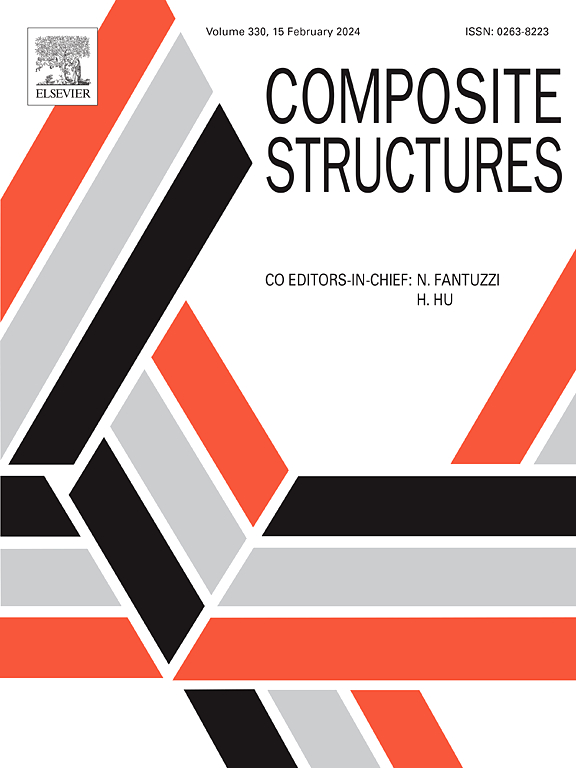Kresling origami structure: Mechanical and aerodynamic drag characteristics
IF 6.3
2区 材料科学
Q1 MATERIALS SCIENCE, COMPOSITES
引用次数: 0
Abstract
This study explores the design and application of Kresling origami structures for efficient one-way airflow control in intelligent ventilation and air flow regulation. The mechanical properties of the Kresling origami structure were examined using the finite particle analysis and the finite element method. The Kresling origami configuration of shape memory polymer was fabricated using 3D printing technology, followed by the execution of mechanical experiments, and the finite element analysis results were juxtaposed with experimental data to elucidate the mechanism. Then, the analysis of the flow field characteristics of the Kresling origami structure includes examination of the drag force properties of both single cell and array structures. The comparison shows that array structures offer better flow resistance than single-cell configurations. Additionally, the impact of the ventilation mechanism and double-layer structure on the drag force is investigated. Results indicate that Kresling origami structures exhibit varying drag force properties depending on folding states and wind direction, enabling efficient airflow regulation. The integration of non-reciprocal structures with double-layer Kresling origami is examined, demonstrating the potential of origami structures in intelligent ventilation, offering valuable insights for their application in fluid mechanics.
求助全文
约1分钟内获得全文
求助全文
来源期刊

Composite Structures
工程技术-材料科学:复合
CiteScore
12.00
自引率
12.70%
发文量
1246
审稿时长
78 days
期刊介绍:
The past few decades have seen outstanding advances in the use of composite materials in structural applications. There can be little doubt that, within engineering circles, composites have revolutionised traditional design concepts and made possible an unparalleled range of new and exciting possibilities as viable materials for construction. Composite Structures, an International Journal, disseminates knowledge between users, manufacturers, designers and researchers involved in structures or structural components manufactured using composite materials.
The journal publishes papers which contribute to knowledge in the use of composite materials in engineering structures. Papers deal with design, research and development studies, experimental investigations, theoretical analysis and fabrication techniques relevant to the application of composites in load-bearing components for assemblies, ranging from individual components such as plates and shells to complete composite structures.
 求助内容:
求助内容: 应助结果提醒方式:
应助结果提醒方式:


